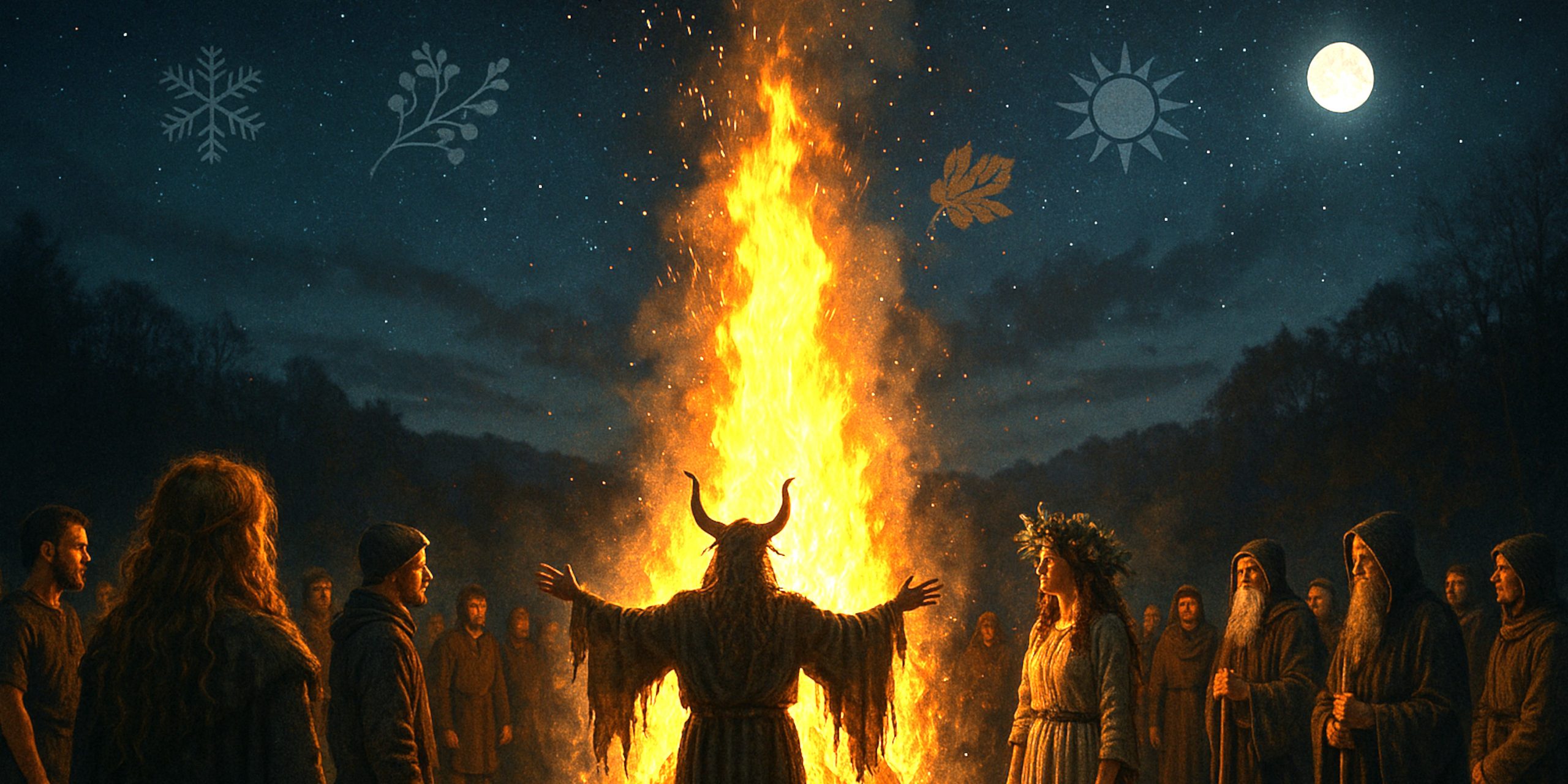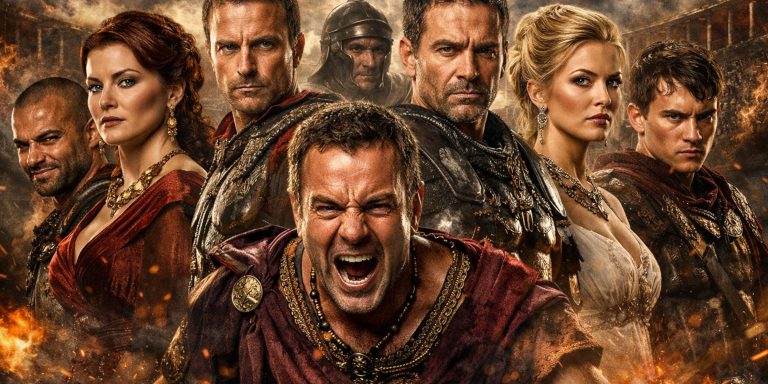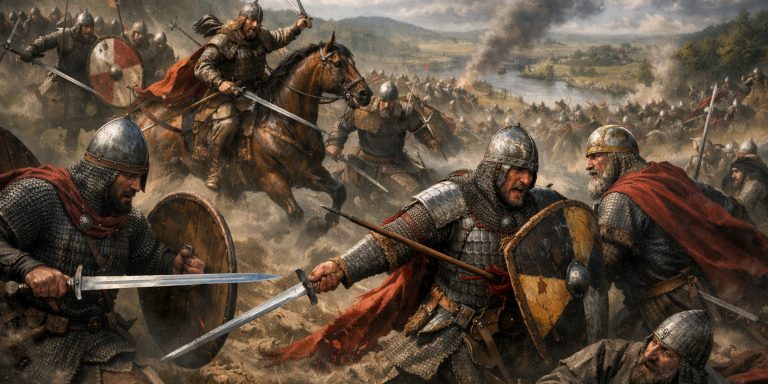
It’s easy to forget that many of the “Christian” holidays we celebrate today didn’t start that way. For all the centuries of sermons, crusades, and calendar reform, the Church couldn’t quite scrub away the bonfires, fertility rituals, and seasonal feasts that defined ancient life. Some were absorbed, renamed, and sanctified. Others just refused to die quietly.
Let’s take a walk through the calendar of celebrations that managed to outlive their pagan roots, hiding in plain sight beneath tinsel, eggs, and pumpkins.
Winter Solstice Becomes Christmas
The Romans already had a big December party long before Christ’s birth was marked on the 25th. Saturnalia, a festival for the god Saturn, was a week-long explosion of feasting, drinking, gift-giving, and temporary role reversal between slaves and masters.
When Christianity rose to power, it didn’t so much erase Saturnalia as it gave it a makeover. By choosing December 25th for the birth of Christ, early church leaders aligned the nativity with Sol Invictus, the “Unconquered Sun,” celebrated at the winter solstice.
The symbolism of light returning after darkness fitted neatly with the story of divine salvation. But if you squint, the carols, candles, and excessive food are all still very Saturnalia in spirit.
Imbolc Transforms into Candlemas
Imbolc, celebrated in early February, was a Celtic fire festival honouring Brigid, the goddess of fertility and poetry. It marked the halfway point between winter and spring, with bonfires, dairy feasts, and purification rituals.
When the Church moved in, Brigid was canonised as Saint Brigid of Kildare, and her festival morphed into Candlemas, celebrating the purification of the Virgin Mary. Candles replaced bonfires, prayers replaced chants, but the light symbolism remained.
It’s a masterclass in rebranding.
Eostre and the Easter Bunny Problem
Springtime fertility celebrations were common across Europe, but Eostre, the Anglo-Saxon goddess of dawn and renewal, gave her name (and a few symbols) to Easter.
Her sacred animals were hares and birds, creatures linked with new life, which explains why we now have rabbits laying chocolate eggs for children.
Easter may commemorate the resurrection of Christ, but its timing follows the pagan solar-lunar calendar, tied to the first full moon after the equinox. Christianity borrowed the date and kept the party.
Beltane Becomes May Day
If you’ve ever seen a maypole dance, you’ve witnessed one of the most blatant survivals of a pagan rite. Beltane, the Celtic festival on May 1st, was all about fertility, fire, and the promise of summer.
Couples jumped over flames to secure passion and prosperity, cattle were driven between bonfires for protection, and communities feasted through the night.
When the Church tried to suppress it, May Day simply shifted to a “celebration of spring” or later became associated with St. Joseph the Worker. The flames dimmed, but the flirting stayed.
Lupercalia Mutates into Valentine’s Day
The Roman Lupercalia in mid-February involved fertility rituals dedicated to Faunus, god of agriculture, and the founders of Rome, Romulus and Remus. Priests sacrificed goats and struck women with the hides for luck in childbirth, a far cry from roses and dinner reservations.
By the Middle Ages, the Church had converted the day into St. Valentine’s feast, honouring a martyred priest. But love and fertility still dominated the narrative. The whip turned into a card, and the ritual became romanticised.
So, when you’re buying that heart-shaped chocolate box, you’re taking part in a Roman fertility rite. Just… more hygienic.
Samhain Survives as Halloween
Perhaps the most transparent of all transformations, Samhain was the Celtic new year, marking the thinning of the veil between the living and the dead. People left offerings for spirits and lit lanterns carved from turnips.
When the Church introduced All Saints’ Day on November 1st and All Souls’ Day on November 2nd, the old habits persisted. All Hallows’ Eve became Halloween, and the bonfires, disguises, and fear of roaming spirits never really went away.
Trick-or-treating, costumes, and ghost stories are simply Samhain with better marketing.
Midsummer Becomes St. John’s Day
The summer solstice, with its bonfires and dancing, was one of the oldest celebrations of light. When the Church arrived, it didn’t cancel it, it dedicated it to St. John the Baptist instead.
The fires now symbolised the “light of Christ,” but across Europe, people still leapt over them, sang the same old songs, and treated the shortest night of the year as a spiritual reset.
The Seven Swords Takeaway
The Church may have won the political battle, but culture is stubborn. Pagan festivals proved too deeply woven into the rhythm of human life to disappear. People wanted their feasts, their fires, and their rituals of renewal. So, religion adapted.
Every time we light candles in winter, dance around a maypole, or carve pumpkins, we’re tapping into something far older than we realise, a continuity of celebration that connects us to the people who watched the same skies thousands of years ago.
Maybe that’s the real miracle: the persistence of joy, despite centuries of attempts to tidy it up.



